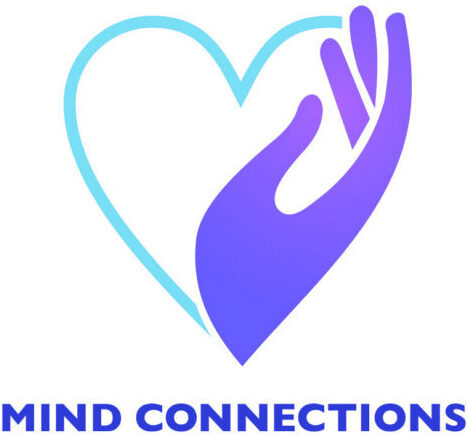Suicide Warning Signs, Risk Factors, and Non-Suicidal Self-Harm
Last week was Suicide Prevention Week, September 5 to September 11. This is a week that spreads awareness about suicide warning signs, factors, and prevention. Mind Connections wants to send our support and care to any one who is affected by suicidal thoughts. Our hearts go to anyone who has lost anyone to this tragedy.
In light of this past week, you may have questions or want to learn more about suicide. If you are interested, keep reading. But first, let’s go over some definitions.
Suicide: Hurting yourself with the aim of ending your life.
Suicidal Ideation: thoughts about killing yourself. Usually it doesn’t ultimately lead to someone attempting suicide.
Self-harm: inflicting damage or pain to our bodies without the desire to die rather to relieve emotions.
If you are interested in learning more, this article is for you.
Why Do People Commit Suicide?
There are many reasons people attempt or commit suicide. Suicide does not discriminate – it plagues the life and mind of all different types of people. The most successful person you know may be secretly struggling with suicidal thoughts. Your friend who is always laughing and smiling may be partaking in self-harm practices behind the closed doors.
Some people show hide their suicide warning signs too well. Suicide can be the result of many different factors in someone’s life.
- Some people are so sad and feel like the only way to escape their pain and suffering is through ending their life.
- Others fear that they are a burden on their family/friends and don’t want to cause others any more pain.
- Some people feel so lonely in life. They have no one they can turn to or lean on when their life is rough.
- Others use drugs and alcohol to numb their pain. This addiction can lead to an untimely death.
- There are people who feel like their life will never get better, they have done too much harm, and there is no way out. This causes them to take their life.
Overall, people commit suicide because their minds makes them believe that it is necessary for things to get better. This is a LIE. If you are not here living on earth anymore, nothing will get better. Your family will mourn, your friends will cry, and all of your goals will be disregarded. You deserve to be here and see the wonderful things that your future can bring you!
What are Some Suicide Risk Factors?
Equally important, you wonder who is at risk for suicide. Many different factors, disorders, and identities put people at a higher chance of Suicide warning signs. Let’s explore some of these ideas.
Depression
Studies show that 90% of people who commit suicide have a mental disorder. Depression is a disorder that is most associated with suicide.
Depression is one of the most common mental health issues in the world. It affects close to 10% American adults each year. Depression makes people feel sad, agitated, lethargic, and unmotivated. People with depression lose pleasure the things they once loved. Depression affects people’s health, family, and career. In serious cases, depression can cause someone to turn to suicide.
People who struggle with depression are at risk for suicide. Notably, tt was found that 60% of people who die from suicide struggled with depression or other mood disorders. Clinicians usually associate suicide with depression. Researcher, Pompili, believes that suicide should be looked at as more than just a symptom of this disorder. People with depression mainly experience suicidal ideation when their negative emotions become unbearable and they view taking their life as their only means of escape.
Pompili goes on to say that hopelessness as the greatest indicator of suicide. When someone lacks hope they lack the idea that tomorrow things might change. Maintaining hope is vital in surviving the challenges life throws at us.
Trauma
People who experience trauma are at risk for suicide. Trauma forms from scarring events a person has witnessed or endured. PTSD, Post Traumatic Stress Disorder, forms in survivors of these events.
PTSD is a type of anxiety that that is triggered by a traumatic event you witness, directly experience, learn about. Trauma could be caused by:
- Being involved in a terrible accident
- Experiencing violence
- Being assaulted,
- Facing threats
- Being ape or sexual violated,
- Getting injured
People can develop PTSD from one, singular event or continuously experiencing scarring factors over a period of time. Comparatively, this type of PTSD is usually referred to as CPTSD, Complex Post-Traumatic Stress Disorder.
Symptoms of PTSD are flashbacks, nightmares, severe anxiety, and uncontrollable thoughts about the event.
Suicide warning signs in Someone With PTSD
According to the U.S Department of Veteran Affairs, suicide risk can be higher in people with PTSD because of the “distressing trauma memories, anger, and poor control of impulses.”
Trauma from Sexual Abuse
Survivors of sexual abuse or childhood abuse are associated with increased risk of suicide. People who have experienced sexual abuse are 10x more likely to attempt suicide. In Kyra Laughlin’s article for the National Sexual Violence Resource Center, Laughlin explains that survivors of sexual assault are likely to develop depression and PTSD. These factors both increase the risk of suicide in survivors.Suicide warning signs
LGBTQ+ Community & Suicide Warning Signs
Members of the LGBTQ+ Community are at risk for suicide. As mentioned in our past article, social support is vital to the well being of queer people. In 2020, The Trevor Project reported that over 40% of LGBTQIA+ youth shared that they took part in self-harm practices and serious contemplation of suicide.
The reports also showed that youth who had lower access to LGBTQ+-affirming spaces (school, home, work, community events, support systems) in their lives experienced greater reports of suicide attempts.
Furthermore, queer people are at risk of developing substance abuse issues. Substance abuse can create risk for suicide, too.
POC/Minority Groups
According to the 2019 report from the Suicide Prevention Resource Center, American Indian/Alaska Native adults had the highest risk for past-year suicide-related thoughts. Hispanic and White people followed close behind.
Black adults had the highest rate for past-year suicide attempts followed Hispanic people. The Suicide Prevention Resource Center provides important and extensive information about suicide risks in racial and ethnic minorities.
What are the Suicide Warning Signs?
If you are worried about a loved one, here are some suicide warning signs to look out for:
- Talking about death or wanting to die a lot
- Joking about killing themselves or dying often – Can there be truth to these “jokes?”
- Giving away their most prized possessions to others all of a sudden
- Doing reckless things with no regard to safety
- Not caring about their life and making no plans for the future
- Feeling hopeless and thinking life will never get better
- Changing their habits: sleeping (too much or not enough), eating, socializing (becoming withdrawn)
The full list of suicide warning signs can be found on the National Suicide Prevention Lifeline webpage listed here.
What is the Difference Between Suicidal and Non-Suicidal Self-harm Behaviors?
Severely suicidal people commit self-harm to end their lives and suffering. At the same time, many people also self-harm not with the aim of killing themselves.
Furthermore, people mostly self-harm because they are struggling with their emotions. These people are distraught and are looking to release their emotional distress. This is especially true for youth and teens. Many people who hurt themselves don’t want to die – they just want to punish themselves and attempt to control their emotions.
According to the Child Mind Institute, parents should look out for these self-harm signs in their teens:
- Scars and wounds constantly appearing on their skin
- Being very protective over revealing their skin – i.e not wanting to change in front of others
- Wearing clothes that cover majority of their skin even when it is hot out
The whole list of these signs can be found here.
Is Attempting Suicide a Sign of Weakness?
NO! People who deal with suicidal thoughts or attempts are not weak! This is a common misconception that creates very harmful stigmas in our society. Dealing with suicidal ideas is extremely challenging. When people die from suicide it is a tragedy. No one who dies in this way should be regarded as weak.
If you are a survivor of suicide or just struggle surviving each day remember that you are STRONG. You are dealing with incredibly difficult times deserve all the care and support in the world. Achieving a better day for yourself – one that is going to be easier and happier. You deserve to find inner happiness and peace.
How Can You Protect from Suicide?
If you or a loved one is concerned about suicide, you can receive help. Talking to a therapist can help you handle your suicidal thoughts better. Therapy can also provide treatment for the common disorders many suicidal people have like: depression, PTSD, and substance abuse.
If you have any suicide warning signs, Mind Connections wants to support you! Our therapists want to help you go against your suicidal thoughts and find hope once more. You can work towards finally access the happier life you deserve.
If you are LGBTQ+, try to lean on your social support in challenging times. Social support seems to be a protective factor against the major threats of suicide. To learn more, read here.
Remember to remind yourself that you will be ok. Tell yourself, “I have survived 100% of my absolute worst days.” Suicide is never the answer t0 anything! Each problem you are facing has an overall solution. You need to stick around to se what amazing things your life can produce!
Resources
Mind Connections has a resource page with suicide prevention hotlines. Below is more resource information. Click the link to find more!
- The American Foundation for Suicide Prevention (AFSP) lists many resources:
- National Suicide Prevention Lifeline: 800-273-8255
- Crisis Text Line: Text TALK to 741-741
- The Trevor Project (LGTBQ+ Support): 1-866-488-7386
- RAINN National Sexual Assault Hotline: 1-800-656-HOPE (4673)
How to Help Someone Who is Suicidal?
If you or a loved one are severely suicidal, reach out for help. Call or text a hotline, reach out to an adult if you are young, or talk with a friend.
Check on your friends who have mentioned suicidal thoughts or desires. Show this person support and love, remind them that you are always there for them, and that you will help them. Let them know how much they mean to you and that your life is so much better because they are in it.
Offer your ear to listen to their venting or expression of their emotions. Remind them that these thoughts and times won’t last forever Things can and always will get better
Content Creator, Victoria Gallo; Reviewed by Dr. June Cao







